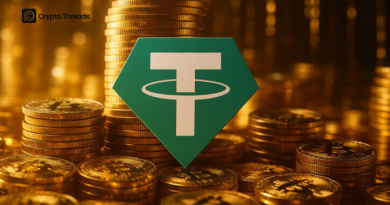Binance’s Record-Breaking $6 Billion Settlement Fuels Crypto Regulatory Debate
Binance’s Record-Breaking
The crypto industry woke up to seismic news today: Binance, the world’s largest cryptocurrency exchange, has agreed to a staggering $6 billion settlement with U.S. regulators, marking the biggest penalty in crypto history. Announced this morning by the U.S. Department of Justice (DOJ) and the Commodity Futures Trading Commission (CFTC), the deal resolves years of investigations into Binance’s alleged violations of anti-money laundering (AML) laws, sanctions evasion, and unregistered trading operations. The fallout? A 12% spike in Bitcoin’s price to $92,000, a surge in altcoin trading, and a heated debate about what this means for crypto’s future.
Cash, Compliance, and Controversy
The $6 billion package includes a $4.3 billion fine—the heftiest ever levied on a crypto firm—and $1.7 billion in disgorgement of illicit profits. Binance CEO Changpeng Zhao, who stepped down in 2023 amid earlier legal woes, called it “a bittersweet milestone” on X, pledging full cooperation with new oversight mandates. Those mandates are strict: Binance must now install a U.S.-based compliance monitor for five years, overhaul its AML systems, and report quarterly to regulators. “We’ve paid the price to move forward,” Zhao posted, hinting at a leaner, more compliant Binance.
Markets didn’t flinch—Bitcoin rallied 12% within hours, Ethereum hit $2,450 (up 9%), and Binance’s native token, BNB, jumped 15% to $420. Traders on X dubbed it “the purge bump,” suggesting the resolution clears a dark cloud over crypto’s biggest player. “Uncertainty’s gone—bulls are back,” one user wrote, echoing the sentiment driving today’s $200 billion market cap surge.
A Double-Edged Sword
For regulators, it’s a triumph. The DOJ hailed the settlement as proof that “no crypto giant is above the law,” pointing to Binance’s role in facilitating over $1 billion in illicit transactions tied to ransomware, dark pools, and sanctioned nations like Iran. CFTC Chair Rostin Behnam called it “a blueprint for enforcement,” signaling more crackdowns ahead. But crypto advocates see a flip side: the hefty fine could embolden innovation outside the U.S., where regulatory burdens are lighter.
“This is a U.S. power grab,” argues Priya Patel, a blockchain consultant in Singapore. “Binance survives, pays up, but smaller exchanges might not. Meanwhile, Dubai and Malta are rolling out the red carpet.” Data backs her up—trading volume on decentralized exchanges (DEXs) like Uniswap spiked 20% today, hinting at a shift away from centralized giants.
Global Echoes and Industry Shifts
The news reverberated beyond America’s shores. In Europe, where regulators are finalizing the Markets in Crypto-Assets (MiCA) framework, officials praised the U.S. move but urged tighter cross-border coordination. Japan’s Financial Services Agency, already strict on crypto, is reportedly fast-tracking audits of local exchanges. In Africa, where Binance has a massive user base, traders worry about higher fees as the exchange recoups its losses—posts on X from Nigeria flagged a 5% uptick in withdrawal costs overnight.
The industry’s soul-searching has begun too. Rival exchanges like Coinbase and Kraken are touting their U.S.-compliant operations, positioning themselves as “safe havens.” DeFi platforms, untethered from centralized oversight, are gaining traction—Uniswap’s daily volume hit $3 billion today, a six-month high. “Binance’s pain is DeFi’s gain,” Patel notes. “The future might be less about exchanges and more about protocols.”
Binance says it’s “stronger than ever,” with $90 billion in assets and a retooled leadership team. But the clock’s ticking—its first compliance report is due June 30, 2025, and any slip-up could trigger more penalties. For the broader market, this settlement closes one chapter but opens another: will regulators double down, or will crypto’s resilience shine through? Today’s rally suggests the latter, but the $6 billion shadow looms large.



